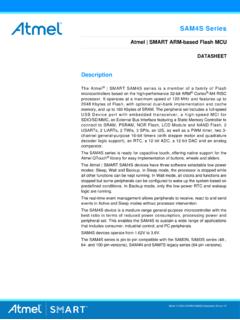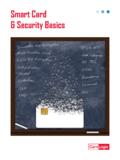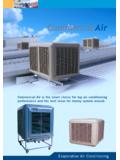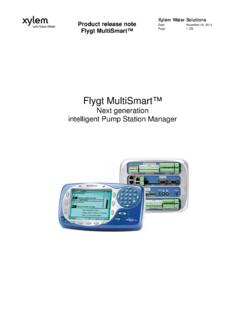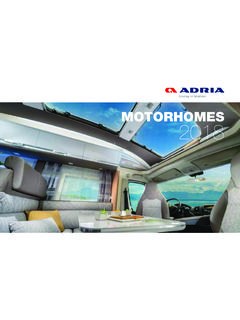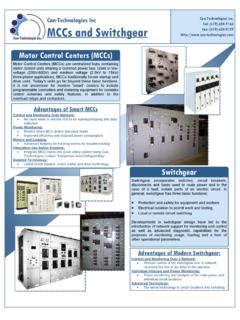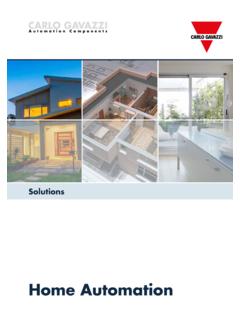Transcription of Integrating EMI Filters and Appliance Motor Controls
1 Integrating EMI Filters and Appliance Motor Controls Mr. Carl J. Dister LCR Electronics, Inc. 9 South Forest Avenue Norristown, PA 19401 Telephone: 1-800-527-4362 Fax: (610) 278-0935 Email: WEB Site: J. Dister LCR Electronics, Inc. 1 ABSTRACT Although appliances for the domestic market do not generally require an EMI filter , this will be changing with the advent of Smart appliances . Integrating this EMI filter and the Appliance Motor control onto the same printed circuit board can save considerable cost. Such integration however requires expertise in the design of both EMI Filters and controllers to avoid unwanted interactions as the two circuits are brought in close proximity.
2 This paper describes some popular types of Appliance Motor Controls , their associated sources of EMI, the process of Integrating the EMI filter and Motor control , and cost savings by this integration. OVERVIEW OF Appliance MOTORS AND Controls There are over 25 classifications of electric motors1. For each Motor there are several controllers that can be utilized in applications requiring on/off control to complex speed/torque control , depending on the cost and performance needed11. Table 1 is a subset of these Motor and control types typically found in the Appliance industry.
3 Two of these Motor Controls will be explained in more detail. Overview of a Typical Triac-Based Universal Motor control Although there are several Motor technologies being introduced to the Appliance industry, the Universal Motor is still the predominant Motor at the present time for applications below 1HP and requiring high speed. Although it has lower life than its brushless counterparts, Universal motors are well suited for low duty cycle applications where Motor efficiency is not as critical. The control of a universal Motor is typically performed with a low cost Triac2.
4 A simple universal Motor control can be found in Figure 1. For cost sensitive applications, an un-isolated, zener diode (ZD1) based power supply is used. Line synchronization and triac gate control are performed with a microcontroller. In this control , the microcontroller turns on the triac at the appropriate point in the line cycle, allowing the appropriate voltage to be applied to the Motor for the desired speed and torque The largest source of EMI noise with this type of control is the switching of the triac. Typically, the EMI noise level generated is high in the low frequency conducted range from 150 KHz to 1 MHz.
5 When designing this type of control , there are tradeoffs between optimum control strategy and lowest level of EMI. For example, it may be beneficial to switch the triac only at zero crossings of the input power to keep EMI noise low. But this would greatly compromise the speed control . Some method of skip firing would need to be Carl J. Dister LCR Electronics, Inc. 2 employed to vary the voltage, resulting in poor control . In general, designing an optimum Motor control is contrary to designing for the lowest EMI. Overview of a Typical IGBT-Based Brushless Motor control In applications requiring lower speed, higher performance, or elimination of brushes, Induction and PM Brushless Motors are used.
6 The control of these motors3 typically uses IGBT s as shown in Figure 2. A diode rectifier and electrolytic capacitor are used to convert the AC line to DC, which is then switched to the Motor windings by the IGBT s. In this type of control , gate drivers are needed to fire the IGBT s connected to high voltage. Also, bus current and voltage sensing is usually required. Caution is needed in connecting grounds to keep isolation, and reduce signal noise. Considering EMI in this control is much different than in the triac controller.
7 The input current is switched through the front end bridge rectifier, creating high current peaks. The IGBT s are switched in the 2 KHz to 20 KHz range, causing large, fast voltage transients into the Motor windings8. The EMI is no longer focused down at low frequency conducted, but now extends into the radiated range. As seen before, tradeoffs need to be made between performance and EMI. For example, switching the IGBT s at lower frequencies would reduce EMI. However, this causes slower current control , attributing to poorer speed regulation and higher acoustic noise.
8 Once again, designing the optimum control is contrary to designing for minimum EMI emissions. Other Motor Controls There are several other Motor Controls ranging in complexity between the one switch solution of the triac control and the six switch solution of the IGBT control . Each depends on Motor type and desired performance. The switches can vary between triacs, SCR s, IGBT s and MOSFETS. In most of these permutations of controllers, experience shows that in each case, the reoccurring theme of trading off between performance and EMI levels exists.
9 OVERVIEW OF TYPICAL EMI filter Figures 1 and 2 contain several sources of electromagnetic noise, which will be discussed later. To suppress the noise generated by these sources, an EMI filter is typically employed. Figure 3 illustrates a typical EMI filter used for appliances4. Traditionally, this type of circuit is added to an Appliance when it is targeted for export. This is done in order to live up to the standards imposed outside the ( EN55014-1). This can increase the system cost significantly. In an attempt to reduce the system cost, it is desirable to merge the EMI filter and the Motor control onto a common printed circuit Carl J.
10 Dister LCR Electronics, Inc. 3 card. During the process of integration, careful selection of components (with a focus on EMI) and proper routing of the board can reduce costs. To design these Filters , and achieve these cost reductions, it is important to understand some of the sources and methods of reducing EMI8. CONDUCTED/RADIATED EMISSIONS OF Motor AND control The system found in Figure 1 has several sources of EMI7. The components themselves are the sources of EMI, and the methods of propogation are in the wires and pc board traces connecting them.
